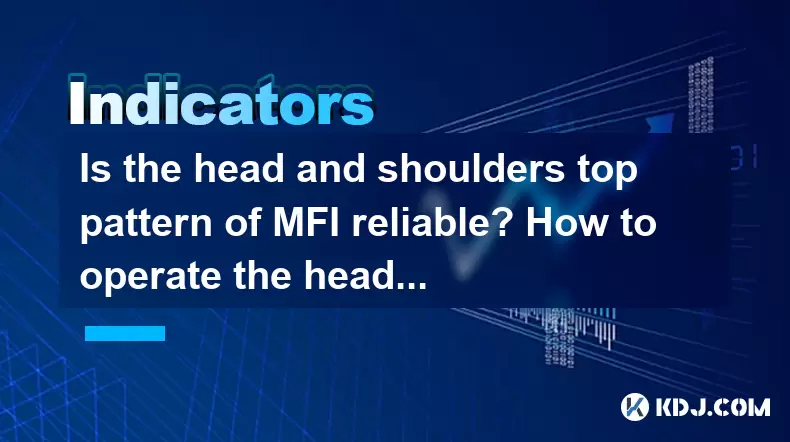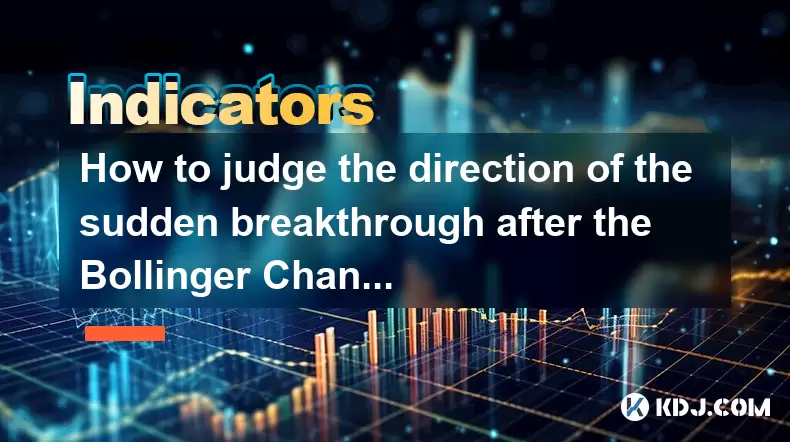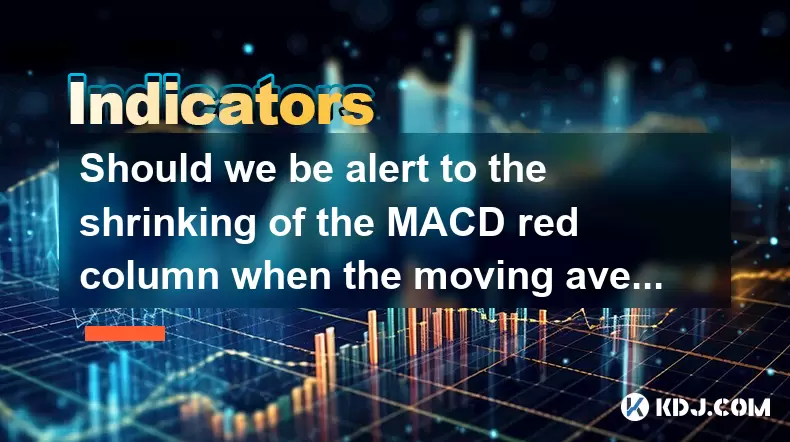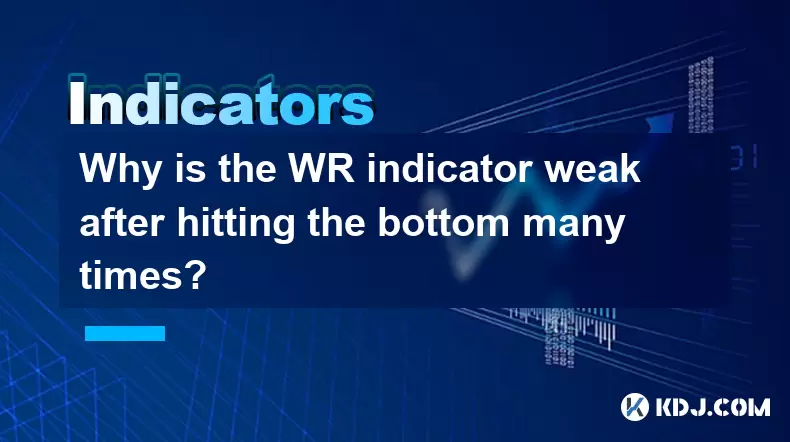-
 Bitcoin
Bitcoin $101,898.5005
-0.75% -
 Ethereum
Ethereum $2,258.1125
-1.07% -
 Tether USDt
Tether USDt $1.0004
0.01% -
 XRP
XRP $2.0178
-2.93% -
 BNB
BNB $624.0243
-1.53% -
 Solana
Solana $134.3298
-0.90% -
 USDC
USDC $0.9999
0.01% -
 TRON
TRON $0.2675
-2.05% -
 Dogecoin
Dogecoin $0.1538
-1.96% -
 Cardano
Cardano $0.5482
-1.11% -
 Hyperliquid
Hyperliquid $35.5636
5.45% -
 Bitcoin Cash
Bitcoin Cash $453.4902
-1.66% -
 Sui
Sui $2.5134
-2.97% -
 UNUS SED LEO
UNUS SED LEO $9.1292
1.77% -
 Chainlink
Chainlink $11.8457
-1.60% -
 Stellar
Stellar $0.2312
-2.73% -
 Avalanche
Avalanche $16.9721
0.29% -
 Toncoin
Toncoin $2.7549
-3.82% -
 Shiba Inu
Shiba Inu $0.0...01081
-1.10% -
 Litecoin
Litecoin $80.8250
-0.71% -
 Hedera
Hedera $0.1374
0.21% -
 Monero
Monero $305.4827
-2.36% -
 Ethena USDe
Ethena USDe $1.0006
0.00% -
 Dai
Dai $1.0000
-0.01% -
 Polkadot
Polkadot $3.2085
-3.12% -
 Bitget Token
Bitget Token $4.0845
-3.13% -
 Uniswap
Uniswap $6.3353
-1.63% -
 Pi
Pi $0.5085
-0.70% -
 Pepe
Pepe $0.0...08913
-3.82% -
 Aave
Aave $232.7090
-0.58%
Is the head and shoulders top pattern of MFI reliable? How to operate the head and shoulders top pattern?
The head and shoulders top pattern in the MFI, when confirmed by volume and other indicators, can be a reliable tool for predicting bearish reversals in the market.
May 23, 2025 at 03:00 am

The head and shoulders top pattern in the Money Flow Index (MFI) is a technical analysis tool used by traders to predict potential reversals in the market. This pattern, when identified correctly, can be a powerful indicator of a bearish trend. In this article, we will explore the reliability of the head and shoulders top pattern in the MFI and provide a detailed guide on how to operate it.
Understanding the Head and Shoulders Top Pattern
The head and shoulders top pattern is a bearish reversal pattern that typically forms after an uptrend. It consists of three peaks: the left shoulder, the head, and the right shoulder. The left shoulder and the right shoulder are roughly at the same level, while the head is the highest peak. The pattern is complete when the price breaks below the neckline, which is drawn by connecting the lows of the left shoulder, the head, and the right shoulder.
The head and shoulders top pattern in the MFI is particularly useful because it combines price action with volume data, providing a more comprehensive view of market sentiment. The MFI is an oscillator that ranges from 0 to 100 and measures the flow of money into and out of a security. A high MFI value indicates strong buying pressure, while a low MFI value indicates strong selling pressure.
Reliability of the Head and Shoulders Top Pattern in MFI
The reliability of the head and shoulders top pattern in the MFI can vary based on several factors, including the timeframe, the asset being analyzed, and the overall market conditions. However, when the pattern is clearly formed and confirmed by other technical indicators, it can be highly reliable.
One of the key factors that enhance the reliability of the head and shoulders top pattern in the MFI is the confirmation from volume. If the volume is higher during the formation of the left shoulder and the head, and then decreases during the formation of the right shoulder, it strengthens the bearish signal. Additionally, a significant increase in volume as the price breaks below the neckline further confirms the pattern.
Another factor that can increase the reliability of this pattern is the alignment with other technical indicators. For example, if the Relative Strength Index (RSI) or the Moving Average Convergence Divergence (MACD) also show bearish signals at the same time, the likelihood of a successful trade based on the head and shoulders top pattern in the MFI increases.
How to Identify the Head and Shoulders Top Pattern in MFI
Identifying the head and shoulders top pattern in the MFI involves a few key steps. Here's a detailed guide on how to do it:
- Observe the MFI chart: Start by looking at the MFI chart over a suitable timeframe. The MFI should be set to a standard period of 14, but you can adjust it based on your trading strategy.
- Identify the left shoulder: Look for the first peak in the MFI. This peak should follow an uptrend and should be accompanied by a corresponding peak in the price chart.
- Identify the head: The next peak in the MFI should be higher than the left shoulder. This peak represents the head and should also be accompanied by a higher peak in the price chart.
- Identify the right shoulder: The third peak in the MFI should be roughly at the same level as the left shoulder. This peak represents the right shoulder and should be accompanied by a corresponding peak in the price chart.
- Draw the neckline: Connect the lows of the left shoulder, the head, and the right shoulder with a horizontal or slightly sloped line. This line is the neckline.
- Confirm the pattern: Wait for the MFI to break below the neckline. This break should be accompanied by a corresponding break in the price chart below the neckline.
How to Operate the Head and Shoulders Top Pattern in MFI
Once you have identified and confirmed the head and shoulders top pattern in the MFI, you can use it to make trading decisions. Here's a step-by-step guide on how to operate this pattern:
- Enter a short position: Once the MFI breaks below the neckline, you can enter a short position. This means you are betting on the price to go down. It's a good practice to wait for a candlestick to close below the neckline to confirm the break.
- Set a stop-loss: To manage your risk, set a stop-loss just above the right shoulder. This way, if the price moves against your trade, your losses will be limited.
- Determine your target: The target for your trade can be calculated by measuring the distance from the head to the neckline and then projecting that distance downward from the point where the price breaks the neckline. This gives you a potential target for the price drop.
- Monitor the trade: Keep an eye on the trade and be prepared to exit if the price reaches your target or if the market conditions change significantly.
Using the Head and Shoulders Top Pattern in MFI with Other Indicators
To increase the effectiveness of the head and shoulders top pattern in the MFI, you can use it in conjunction with other technical indicators. Here are some ways to do that:
- Combine with RSI: The RSI is another momentum oscillator that can help confirm the bearish signal from the head and shoulders top pattern. If the RSI is also showing overbought conditions and starts to decline, it strengthens the bearish signal.
- Combine with MACD: The MACD is a trend-following momentum indicator that can help confirm the bearish trend. If the MACD line crosses below the signal line around the same time the head and shoulders top pattern in the MFI is confirmed, it adds more confidence to your trade.
- Combine with volume analysis: As mentioned earlier, volume is a crucial factor in confirming the head and shoulders top pattern. If the volume decreases as the right shoulder forms and increases as the price breaks below the neckline, it adds more reliability to the pattern.
Practical Example of the Head and Shoulders Top Pattern in MFI
To illustrate how the head and shoulders top pattern in the MFI can be used in practice, let's consider a hypothetical example:
- Scenario: You are analyzing the MFI chart of Bitcoin (BTC) on a daily timeframe. You notice that the MFI has formed a head and shoulders top pattern.
- Left shoulder: The first peak in the MFI is at 80, corresponding to a price peak of $50,000.
- Head: The next peak in the MFI is at 90, corresponding to a price peak of $55,000.
- Right shoulder: The third peak in the MFI is at 80, corresponding to a price peak of $50,000.
- Neckline: The lows of the left shoulder, the head, and the right shoulder are connected to form a neckline at an MFI value of 50 and a price level of $45,000.
- Break below the neckline: The MFI breaks below the neckline to a value of 40, and the price breaks below the neckline to $43,000.
In this scenario, you would enter a short position when the MFI and price break below the neckline. You would set a stop-loss just above the right shoulder at $51,000. The target for the trade would be calculated by measuring the distance from the head to the neckline ($55,000 - $45,000 = $10,000) and projecting that distance downward from the break point ($43,000 - $10,000 = $33,000). You would then monitor the trade and exit when the price reaches your target or if market conditions change.
Frequently Asked Questions
Q1: Can the head and shoulders top pattern in MFI be used on different timeframes?
Yes, the head and shoulders top pattern in the MFI can be used on various timeframes, from intraday charts to weekly or monthly charts. However, the reliability of the pattern may vary depending on the timeframe. Shorter timeframes may provide more frequent signals but with potentially lower reliability, while longer timeframes may provide more reliable signals but with fewer trading opportunities.
Q2: What are the limitations of using the head and shoulders top pattern in MFI?
One of the main limitations of using the head and shoulders top pattern in the MFI is the potential for false signals. The pattern may appear to form but fail to break below the neckline, leading to a false bearish signal. Additionally, the pattern can be subjective, and different traders may interpret the same chart differently. It's important to use other technical indicators and volume analysis to confirm the pattern and increase its reliability.
Q3: How can I improve my skills in identifying the head and shoulders top pattern in MFI?
To improve your skills in identifying the head and shoulders top pattern in the MFI, you can practice on historical charts of various cryptocurrencies. Use a demo trading account to test your strategies without risking real money. Additionally, consider using trading software that allows you to draw and test the pattern on different timeframes and assets. Reading books and articles on technical analysis and joining trading communities can also provide valuable insights and feedback.
Q4: Is the head and shoulders top pattern in MFI suitable for all types of traders?
The head and shoulders top pattern in the MFI can be used by various types of traders, but it may be more suitable for those who prefer technical analysis and have a good understanding of chart patterns and momentum indicators. Day traders and swing traders may find it particularly useful for identifying short-term trading opportunities. However, long-term investors might find it less relevant, as they typically focus on fundamental analysis and longer-term trends.
Disclaimer:info@kdj.com
The information provided is not trading advice. kdj.com does not assume any responsibility for any investments made based on the information provided in this article. Cryptocurrencies are highly volatile and it is highly recommended that you invest with caution after thorough research!
If you believe that the content used on this website infringes your copyright, please contact us immediately (info@kdj.com) and we will delete it promptly.
- Cryptocurrencies, Coingecko, and Trending Tokens: What's Hot Now?
- 2025-06-23 23:05:12
- FUNToken: Decoding Past Trends and Getting Started in the Gaming Crypto Sphere
- 2025-06-23 22:25:12
- BTC Price Analysis: Navigating Volatility and the Quest for a New ATH
- 2025-06-23 22:25:12
- Genesis, Bitcoin Mining, and Air-Cooled Miners: A New Era?
- 2025-06-23 22:45:12
- Coinbase's Growth and Resilience: Navigating the Crypto Landscape
- 2025-06-23 22:45:12
- Bitcoin Options Market: Bullish Bets Amidst Geopolitical Jitters
- 2025-06-23 22:51:52
Related knowledge

What is the significance of the gap formed by the gap opening not being filled within five days?
Jun 23,2025 at 09:42pm
Understanding Gaps in Cryptocurrency TradingIn the world of cryptocurrency trading, a gap refers to a situation where the price of an asset jumps from one level to another without any trading activity occurring between those two levels. This often happens over weekends or holidays when the market is closed, and significant news or events occur that impa...

Does the second golden cross of MACD above the zero axis represent the continuation of strength?
Jun 23,2025 at 08:21pm
Understanding the MACD IndicatorThe Moving Average Convergence Divergence (MACD) is a widely used technical analysis tool in cryptocurrency trading. It consists of three main components: the MACD line, the signal line, and the histogram. The MACD line is calculated by subtracting the 26-period Exponential Moving Average (EMA) from the 12-period EMA. The...

How to judge the direction of the sudden breakthrough after the Bollinger Channel narrows to the extreme?
Jun 23,2025 at 11:00pm
Understanding the Bollinger Channel and Its Narrowing PatternThe Bollinger Channel is a widely used technical indicator in cryptocurrency trading, consisting of three bands: the middle band (a simple moving average), and two outer bands that represent standard deviations from the middle line. When the price consolidates for an extended period, the chann...

Is it effective when the DIF line suddenly crosses the zero axis when the volume is shrinking and the market is trading sideways?
Jun 23,2025 at 07:29pm
Understanding the DIF Line in Technical AnalysisThe DIF line, or the Difference Line, is a critical component of the MACD (Moving Average Convergence Divergence) indicator, widely used in technical analysis across cryptocurrency and traditional financial markets. It represents the difference between the 12-period EMA (Exponential Moving Average) and the...

Should we be alert to the shrinking of the MACD red column when the moving average is arranged in a bullish pattern?
Jun 23,2025 at 08:14pm
Understanding the MACD Red Column and Its SignificanceThe Moving Average Convergence Divergence (MACD) is a widely used technical indicator in cryptocurrency trading. It consists of three main components: the MACD line, the signal line, and the MACD histogram (the red column). The red column represents the difference between the MACD line and the signal...

Why is the WR indicator weak after hitting the bottom many times?
Jun 23,2025 at 07:56pm
Understanding the WR Indicator in Cryptocurrency TradingThe Williams %R (WR) indicator is a momentum oscillator used by traders to identify overbought and oversold levels in the market. It ranges from 0 to -100, with readings above -20 considered overbought and below -80 considered oversold. In the context of cryptocurrency trading, where volatility is ...

What is the significance of the gap formed by the gap opening not being filled within five days?
Jun 23,2025 at 09:42pm
Understanding Gaps in Cryptocurrency TradingIn the world of cryptocurrency trading, a gap refers to a situation where the price of an asset jumps from one level to another without any trading activity occurring between those two levels. This often happens over weekends or holidays when the market is closed, and significant news or events occur that impa...

Does the second golden cross of MACD above the zero axis represent the continuation of strength?
Jun 23,2025 at 08:21pm
Understanding the MACD IndicatorThe Moving Average Convergence Divergence (MACD) is a widely used technical analysis tool in cryptocurrency trading. It consists of three main components: the MACD line, the signal line, and the histogram. The MACD line is calculated by subtracting the 26-period Exponential Moving Average (EMA) from the 12-period EMA. The...

How to judge the direction of the sudden breakthrough after the Bollinger Channel narrows to the extreme?
Jun 23,2025 at 11:00pm
Understanding the Bollinger Channel and Its Narrowing PatternThe Bollinger Channel is a widely used technical indicator in cryptocurrency trading, consisting of three bands: the middle band (a simple moving average), and two outer bands that represent standard deviations from the middle line. When the price consolidates for an extended period, the chann...

Is it effective when the DIF line suddenly crosses the zero axis when the volume is shrinking and the market is trading sideways?
Jun 23,2025 at 07:29pm
Understanding the DIF Line in Technical AnalysisThe DIF line, or the Difference Line, is a critical component of the MACD (Moving Average Convergence Divergence) indicator, widely used in technical analysis across cryptocurrency and traditional financial markets. It represents the difference between the 12-period EMA (Exponential Moving Average) and the...

Should we be alert to the shrinking of the MACD red column when the moving average is arranged in a bullish pattern?
Jun 23,2025 at 08:14pm
Understanding the MACD Red Column and Its SignificanceThe Moving Average Convergence Divergence (MACD) is a widely used technical indicator in cryptocurrency trading. It consists of three main components: the MACD line, the signal line, and the MACD histogram (the red column). The red column represents the difference between the MACD line and the signal...

Why is the WR indicator weak after hitting the bottom many times?
Jun 23,2025 at 07:56pm
Understanding the WR Indicator in Cryptocurrency TradingThe Williams %R (WR) indicator is a momentum oscillator used by traders to identify overbought and oversold levels in the market. It ranges from 0 to -100, with readings above -20 considered overbought and below -80 considered oversold. In the context of cryptocurrency trading, where volatility is ...
See all articles
























































































